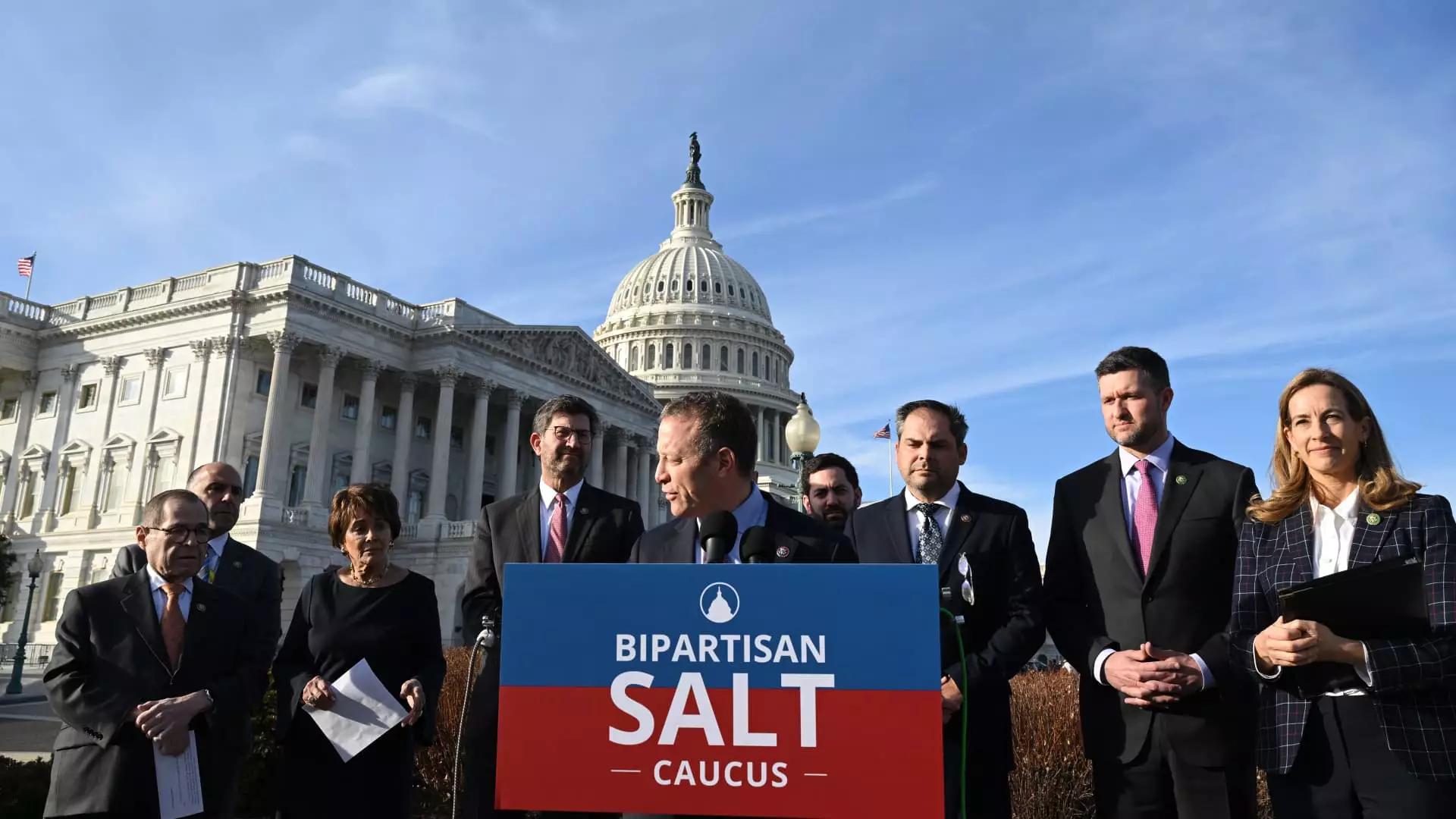The state and local tax (SALT) deduction has become a focal point in political discourse, particularly as the United States navigates the potential ramifications of elevated tax policies following the 2024 elections. Initially introduced in the Tax Cuts and Jobs Act (TCJA) of 2017, the SALT deduction limits taxpayers to a maximum deduction of $10,000 for state and local taxes, encompassing income and property taxes. The strict imposition of this cap has surfaced significant discontent, particularly among residents in high-tax states like California, New Jersey, and New York, who feel the brunt of financial strain. As these debates gain momentum, it’s vital to critically assess who stands to benefit if changes come to fruition.
The Argument for Raising the SALT Cap
Various lawmakers have made the case for increasing the SALT cap, arguing fervently that its effects are inequitable. Those advocating for change contend that the current cap disproportionately disadvantages individuals and families in states that impose higher state and local taxes, thus creating a regressive tax structure. Experts like Garrett Watson from the Tax Foundation emphasize that adjustments to this limit are plausible, especially in the intricate negotiations of Congress, where factions align with different fiscal priorities. An expansion or complete repeal of the cap would inevitably favor wealthier households, instigating a discussion that raises eyebrows among advocates for economic equality.
The Burden on the Middle Class
It’s particularly troubling that these discussions often sideline the average taxpayer. With approximately 90% of filers opting for the standard deduction—currently set at $15,000 for single filers and $30,000 for married couples—many American households remain fundamentally disconnected from the contentious SALT conversations. The real danger lies in the idea that policymakers may cater to the affluent demographic while leaving those earning less than $200,000 per annum to bear the brunt of their decisions. There is a prevailing notion that raising the SALT cap only creates an inequitable playing field by allowing those in upper-middle income brackets to reap substantial benefits while the lower-middle class continues to struggle with rising property taxes and stagnant wages.
Disproportionate Benefits for the Wealthy
Consider proposals that aim to double the SALT deduction limit for married couples from $10,000 to $20,000. Such adjustments could lead to an almost unrestrained tax advantage directed primarily at households making over $200,000. An alarming analysis from the Tax Policy Center indicates that if lawmakers were to completely repeal the SALT cap, nearly 75% of the benefits would flow to households earning $430,000 or more. This raises ethical questions about the rationale behind prioritizing tax breaks for the wealthy at a time when income inequality and economic disparity are prevalent issues in American society.
The Political Landscape: Navigating Tax Laws Amidst Competing Interests
As political discussions heat up, the dynamics surrounding SALT deductions become increasingly perilous. Wealthy constituencies in high-tax states possess a more significant voice in these negotiations, often overshadowing common voters’ needs. The risk is compounded by a tight House Republican majority, creating a challenging environment for compromise. Citizens in the U.S. must be wary of a shift that unequivocally favors the rich, as it could set a precedent of tax policy that does not serve the broader American populace, or worse, exacerbates the divide between the wealthy and the rest.
In such a tumultuous climate, it is the responsibility of progressive voices to push back against policies that ultimately serve the elite while ignoring the needs of the majority. Engaging the public in a broader discourse around tax fairness is crucial to ensuring that changes to tax laws will reflect the values of equity, support for working families, and the carefully curated fabric of middle-class America, rather than handing disproportionate benefits to the affluent.

